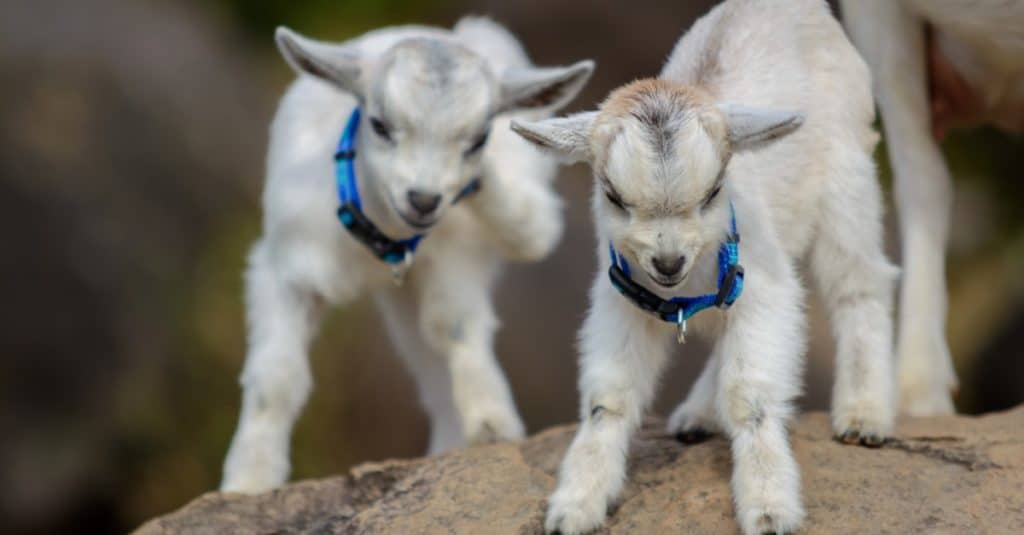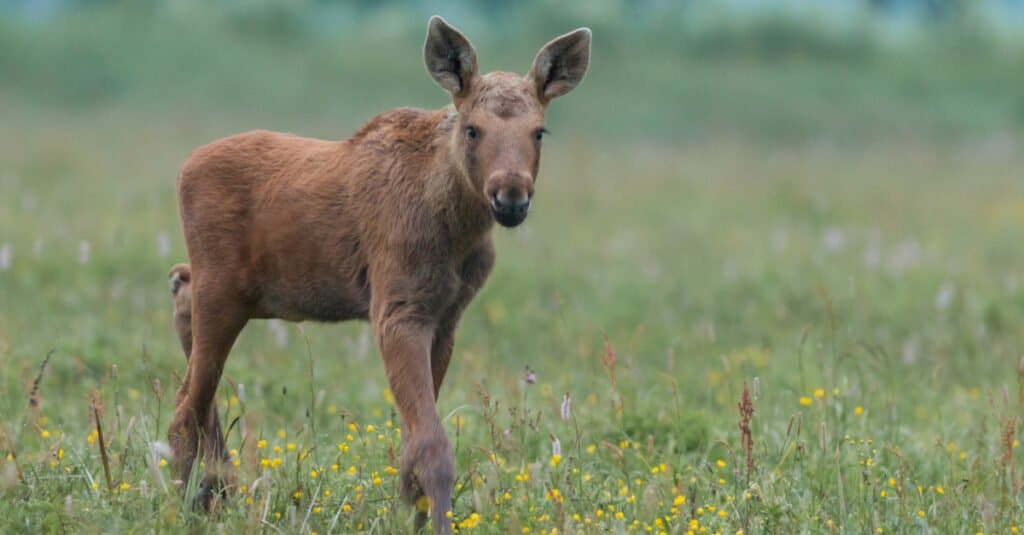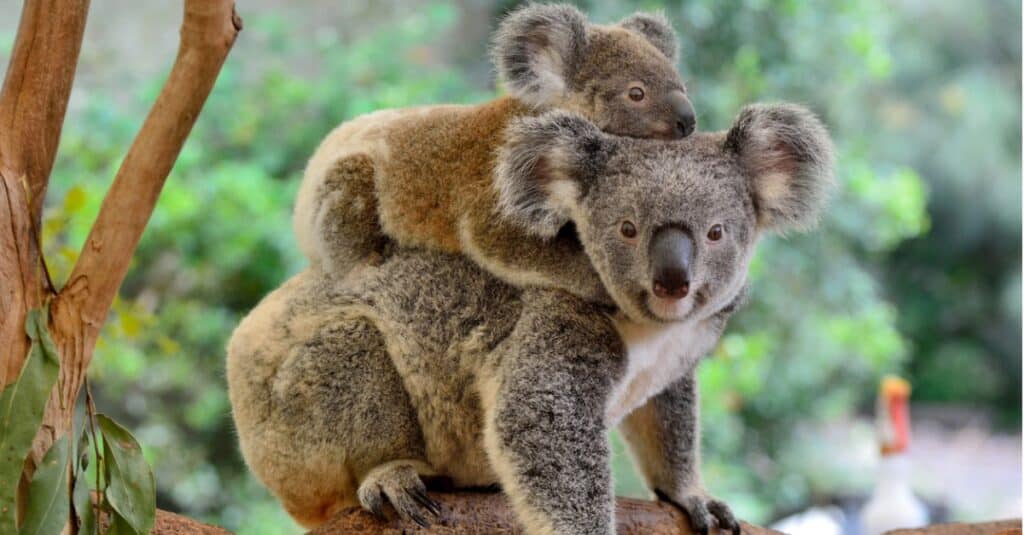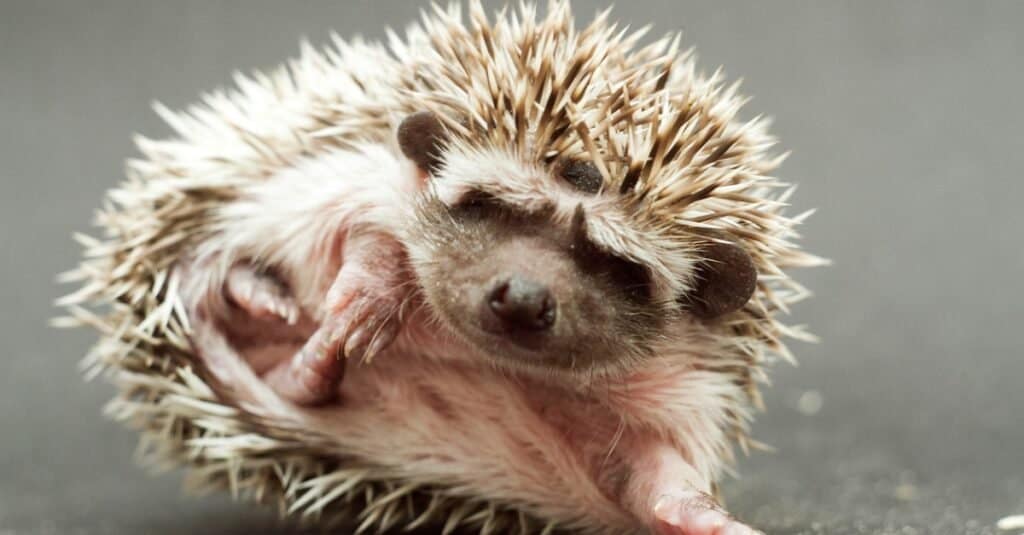Names for baby animals can be silly, sweet, and strange. One of the most common baby animal names is a cub, which can be the name of a baby bear, tiger, or even panda. Calves are the baby animal names to many as well, like baby cows or giraffes.
Beyond just a couple of well-known species, many names for baby animals go unnoticed, and most people tend to call them by their adult counterparty’s name. Such as “baby crocodile” although the correct term would be hatchling.
Every species has a name – do you know them all?
Here are the names of 52 cute baby animals you may come across:
Why Are People Captivated by Baby Animals?
It’s not hard to see why baby animals are so captivating to people. Whether it’s a fluffy puppy, a wobbly foal, or a tiny kitten, there’s something about the innocence and vulnerability of young animals that tugs at our heartstrings
Here are a few reasons why we humans love baby animals and the psychology behind it:
- Instinctual Response: Humans have an instinctual response to care for and protect babies of all species. This is a survival mechanism that has been hardwired into our brains over thousands of years of evolution.
- Cuteness Overload: Studies have shown that looking at cute images of baby animals can have a positive effect on our mood and overall well-being.
- Nostalgia: For many people, seeing a baby animal can evoke feelings of nostalgia and childhood memories.
- Innocence: There’s something inherently pure and innocent about baby animals, and people just think that’s adorable!
People are captivated by baby animals for a variety of reasons. Whether it’s our instinctual response to care for the young, their undeniable cuteness, the nostalgia they evoke, or their inherent innocence, there’s no denying that baby animals hold a special place in our hearts.
Baby Bear: Cub
A baby bear is called a cub, and they are typically born during the wintertime, weighing between eight and 16 pounds. They live in a den with their adult mother, and they are born completely blind. Their main source of food is their mother’s milk, and they can be born with several siblings.
Baby Goat: Kid

©TOMO/Shutterstock.com
The baby of a goat is called a kid. While baby goats can eat hay after about a month, they predominantly drink their mother’s milk. These farm animals typically live on a farm, but it is safe to separate the baby goat from its mother if it can be bottle-fed.
Baby Cat: Kitten
No list of cute baby animals would be complete without mentioning the kitten, which is the baby of a cat. They consume only their mother’s milk until they are about eight weeks old, at which time they can transition into wet or dry kitten food. They often live with their mother until they no longer need her milk.
Baby Chicken: Chick
Chickens give birth to chicks as their babies. These farm animals are hatched from eggs, requiring a male to fertilize them before they become living animals. Chicks often are raised separately from their mother before they live in a chicken coop as adults.
Baby Cow: Calf
Another group of farm animals that have their baby animal names for their offspring is cows, which give birth to calves. Calves can be fed their mother’s milk or formula with silage, haylage, straw, and other proteins. These domestic animals live on farms for the most part, but they’ll go wherever their mother goes.
Baby Giraffe: Calf
Giraffes give birth to calves as well. As an adult, their entire diet consists of plants, but the calf will specifically drink from their mother until they are at least nine months old. They can add plants to their diet as early as four months old, but milk is still necessary for the baby giraffe. The natural habitat of giraffes and their calves is sub-Saharan Africa.
Baby Rabbit: Bunny

.
©MemoryMan/Shutterstock.com
A baby rabbit is often referred to as a bunny. Young rabbits (under seven months old) need to have consistent access to alfalfa pellets and hay. They’ll also need protein and calcium, though rabbits enjoy many types of vegetables as well. Different breeds of rabbits live in different areas, so their habitat can ultimately be anywhere.
Baby Horse: Foal
A baby horse is known as a foal. Foals typically need to start with their mother’s milk. By the time they are three to four months old, the digestive tract of the baby horse has matured enough to consume fiber-based foods like pellets. A horse foal typically lives in a stable and is taken care of by its owner.
Baby Tiger: Cub
A baby tiger is known as a cub. These tiger cubs live with their mother until they are two years old. They typically nurse until they are 24 weeks (about five to six months) old before their mother brings them prey to eat. Tiger cubs are not able to hunt for themselves until after they are 1.5 years old.
Baby Fox: Kit

©iStock.com/klaabu
Kits are baby foxes. Ordinarily, a fox will eat a combination of small mammals and fresh produce. To nourish its babies, the mother fox will regurgitate their prey to make it easier for them to consume. Though each species is different, forested areas are a preferred fox habitat.
Baby Dog: Puppy
Dogs give birth to puppies. Though there are many different breeds, all of them nourish their puppies with milk until they are old enough to chew their food at about six to eight weeks.
Baby Goose: Gosling
Goslings, the babies of geese, typically eat grass. However, the species determines exactly what else is in their diet. Most goslings require supplemental feeding until they are five to six weeks old.
Baby Kangaroo: Joey
Joeys live in their mother’s pouches until they are six months old. The predominant diet of these cute baby animals consists of their mother’s milk and grasses. They only consume an herbivorous diet.
Baby Pig: Piglet

©Simun Ascic/Shutterstock.com
Piglets typically live on farms until they reach adulthood at five months old. They eat a range of food as omnivores, though they will feed on their mother’s milk until they are two months old.
Baby Platypus: Platypup
Platypups, the offspring of the platypus, consume their mother’s milk through pores on the chest, much in the same way that someone would drink water from their hands. They only live in the freshwater regions of Tasmania.
Baby Sheep: Lamb
The babies of sheep are lambs, and they can eat a steady diet of grass and forage plants without irritation to their digestive system. Often raised on a farm with their mother, lambs will drink their mother’s milk, but it is possible to wean them at two weeks old.
Baby Swan: Cygnet
Cygnets, or baby swans, don’t initially have to eat in their first few days of life. They will forage their natural habitat (including ponds and similar areas) to find insects and local vegetation.
Baby Jellyfish: Ephyna
Though there are many breeds of jellyfish, babies – known as ephynas – eat larvae. They are only found in the ocean, but their fragile state leaves them with many potential predators.
Baby Hummingbird: Chick
A baby hummingbird is known as a chick. These chicks drink water and will eat regurgitated bugs and nectar from their mothers. Hummingbird babies don’t usually fend for themselves until they are about three weeks old and can start to fly from their nest.
Baby Mole: Pup
A baby mole, or a pup, needs its mother’s milk. It often lives underground, looking for its worms and other bugs if it can hunt.
Baby Moose: Calf

©Szczepan Klejbuk/Shutterstock.com
The baby of a moose is called a calf, and it needs the mother’s milk from birth to build up its immune system for the first five months they are alive. After weaning, they’ll maintain an herbivorous diet.
Baby Elephant: Calf
Elephant babies are called calves, and they’ll drink their mother’s milk for at least two years. They can eat plants as young as five months old, but it is not their main source of nutrients. Elephants often live in Africa and Asia.
Baby Koala: Joey

©Alizada Studios/Shutterstock.com
Baby koalas, which are called joeys, will live in their mother’s pouch until they are six months old. They are born without hair, ears, or eyesight. They primarily live in Australia.
Baby Otter: Pup
Baby otters, or pups, live with their mothers in dens, which must be in a secure location to protect them. They drink milk from their mother for the first 40 days before they start consuming plants and tiny fish.
Baby Baboon: Infant
The babies of baboons are called infants, and they stay with their mothers for about six months until they are weaned. They’ll live with their mother in Africa or Arabia until they are two years old.
Baby Turkey: Poult
Poults, or baby turkeys, live in nests and cannot fly. They will roost in trees with their mother when they are big enough to fly and eat whole grains.
Baby Toad: Tadpole
As a baby, toads live in the water as tadpoles. They emerge on land when they grow legs, and their tail goes away. Generally, tadpoles eat soft plant matter.
Baby Hedgehog: Piglet

©iStock.com/Carmelka
Hedgehogs feed their baby piglets milk until they are eight weeks old. However, if you keep one as a pet, they’ll willingly indulge in wet dog or cat food.
Baby Monkey: Infant
Baby monkeys – known as infants – live in tropical rainforests in the trees. Along with their mother’s milk, they’ll also eat foods that their mother gives them as early as two weeks old.
Baby Mouse: Pinkie
A baby mouse often called a pinkie, eats their mother’s milk until they are 28 days old. After this age, they’ll forage for crumbs, seeds, insects, and nuts as nourishment wherever they are.
Baby Penguin: Chick
Penguins lay eggs to give birth to their chicks. Rather than providing their young with milk, they give their chicken a secreted substance called crop milk, which is high in fat and created by a pouch in their throat.
Baby Rat: Pup
Baby rats, known as pups, will consume their mother’s milk for the first three weeks of life before they eat the same as their mothers. Rats are found almost anywhere, though they can also be kept as pets.
Baby Mosquito: Tumbler
Baby mosquitos are known as tumblers. They live in the water and feed on algae.
Baby Hippopotamus: Calf
Baby hippos – or calves – primarily eat grass after they are three weeks old, but they’ll continue to suckle for milk from their mother for up to eight months. They can even drink underwater.
Baby Pigeon: Squab

©ARTFULLY PHOTOGRAPHER/Shutterstock.com
The babies of pigeons are called squabs, and they are given regurgitated food for the first few days after they hatch. They’ll start eating fruits, seeds, and sometimes invertebrates after nine days.
Baby Ape: Baby
Like most mammals, baby apes – simply called babies – drink milk from their mothers. After they are weaned, the specific diet depends on the particular species.
Baby Bat: Pup
Baby bats, known as pups, are fed with regurgitated nectar from their mothers, as well as milk. They’ll also consume mealworms.
Baby Snake: Snakelet
Snakelets, or baby snakes, are carnivorous, though the diet depends on the species. They are found all over the world, though this baby name applies to all of them.
Baby Deer: Fawn
Fawns are baby deer. They remain with their mother to continue drinking her milk until they are about 12 weeks old. After, they will seek out fruit as their primary food source.
Baby Bird: Hatchling
In general, baby birds are considered hatchlings, unless the specific breed has a different name. Birds come in all shapes and sizes, and they are found around the world.
Baby Camel: Calf
Baby camels are called calves, and they mainly consume milk until they are 12-18 months old. Mothers continue to produce for a while after that as long as the calf continues to nurse.
Baby Butterfly: Caterpillar

©iStock.com/NATALYA DRALOVA
Caterpillars are considered to be the baby stage of a butterfly. They eat leaves and wrap themselves within a cocoon to make the transition.
Baby Crocodile: Hatchling
Baby crocodiles, which are born from an egg, are called hatchlings. They’ll start eating insects, fish, and small frogs at an early age, though their small body prevents them from taking down bigger prey.
Baby Eagle: Eaglet
A baby eagle is called an eaglet. Even as a baby, these birds will start eating raw meat on the first day of their life, and the male is often the one that nourishes them.
Baby Fish: Fry
The baby stage of a fish is called a fry, which is ready to eat on its own like a regular fish. Even with many different species of fish, the word “fry” is used to describe most of them.
Baby Owl: Owlet

©Lena Ostberg/Shutterstock.com
A baby owl, also known as an owlet, is notable for its lack of mature plumage. It relies on the mother to bring it meat, though any owlet that falls from the nest will not likely be cared for.
Baby Oyster: Spat
The reproduction cycle of oysters brings spat, which comes after the larvae attach to a surface to grow. They survive mainly on phytoplankton.
Baby Panda: Cub
Like many bears, the baby of a panda is called a cub. Mothers often only feed the strongest cub when she has two or more babies, and they cannot eat bamboo until they are a year old.
Baby Ferret: Kit

©iStock.com/bozhdb
Baby ferrets are called kits, which count any ferret under a year old. Every kit is born with white fur, and they like to eat fresh meat and their mother’s milk.
Baby Fly: Maggot
The baby animal name for a fly is a maggot. Maggots eat excessively, and they will even go after other maggots to nourish themselves.
Baby Grasshopper: Nymph
Before a grasshopper reaches adulthood, it is called a nymph. It reaches adulthood within about 11 months, though they don’t develop their wings until that stage.
Baby Spider: Spiderling
Baby spiders are called spiderlings. Up to 3,000 eggs are laid at a time to produce these offspring that have to fend for themselves upon being born.
List of Animal Baby Names
To break it down, here are the top 10 baby names on our list of 52 baby animal names:
| Rank | Baby Animal Names |
|---|---|
| 10. | Baby Crocodile: Hatchling |
| 9. | Baby Eagle: Eaglet |
| 8. | Baby Fish: Fry |
| 7. | Baby Owl: Owlet |
| 6. | Baby Oyster: Spat |
| 5. | Baby Panda: Cub |
| 4. | Baby Ferret: Kit |
| 3. | Baby Fly: Maggot |
| 2. | Baby Grasshopper: Nymph |
| 1. | Baby Spider: Spiderling |
10 Fun Facts About Baby Animals
Here are 10 fun facts about baby animals:
- Baby elephants are born weighing around 220 pounds and are able to stand up and walk within minutes of being born.
- Baby kangaroos, called joeys, are born the size of a jellybean and then crawl into their mother’s pouch to continue developing.
- Baby bats are able to fly within three weeks of being born.
- Baby otters are able to swim within hours of being born.
- Baby lions are born with blue eyes and dark spots on their fur, which disappear as they get older.
- Baby pandas are born pink and hairless, and are about the size of a stick of butter.
- Baby giraffes are born standing up and are about 6 feet tall at birth.
- Baby porcupines are born with soft quills, which harden within hours of being born.
- Baby koalas are born about the size of a jellybean and then crawl into their mother’s pouch to nurse and develop.
- Baby hedgehogs are born blind and are fully covered in spines within 24 hours of being born.
It’s worth noting that there are many more types of baby animals with unique and fascinating characteristics, these are just a few examples to give an idea of the diversity among them.
The photo featured at the top of this post is © iStock.com/nearandfar
Thank you for reading! Have some feedback for us? Contact the AZ Animals editorial team.






